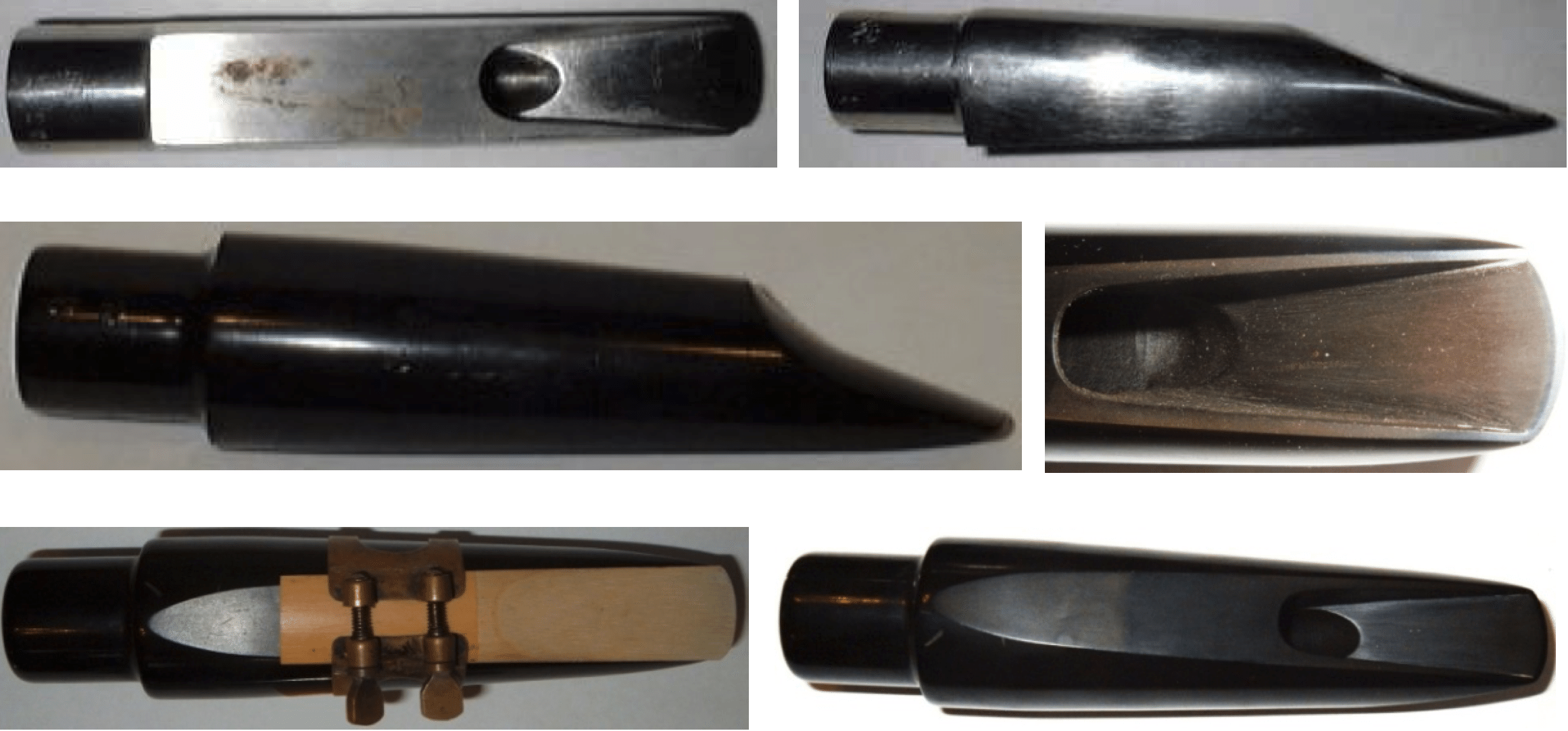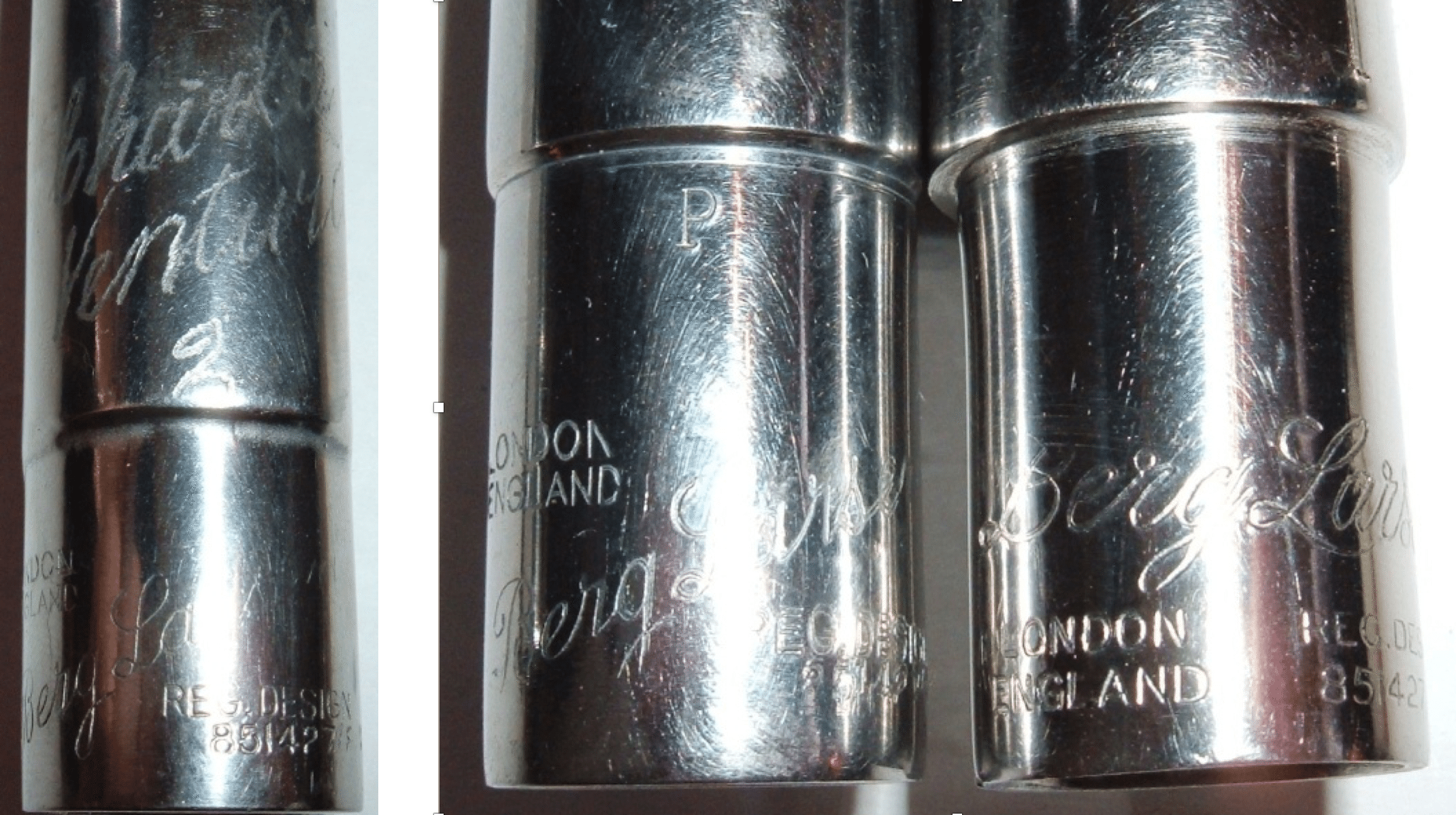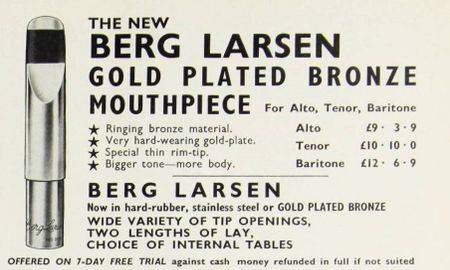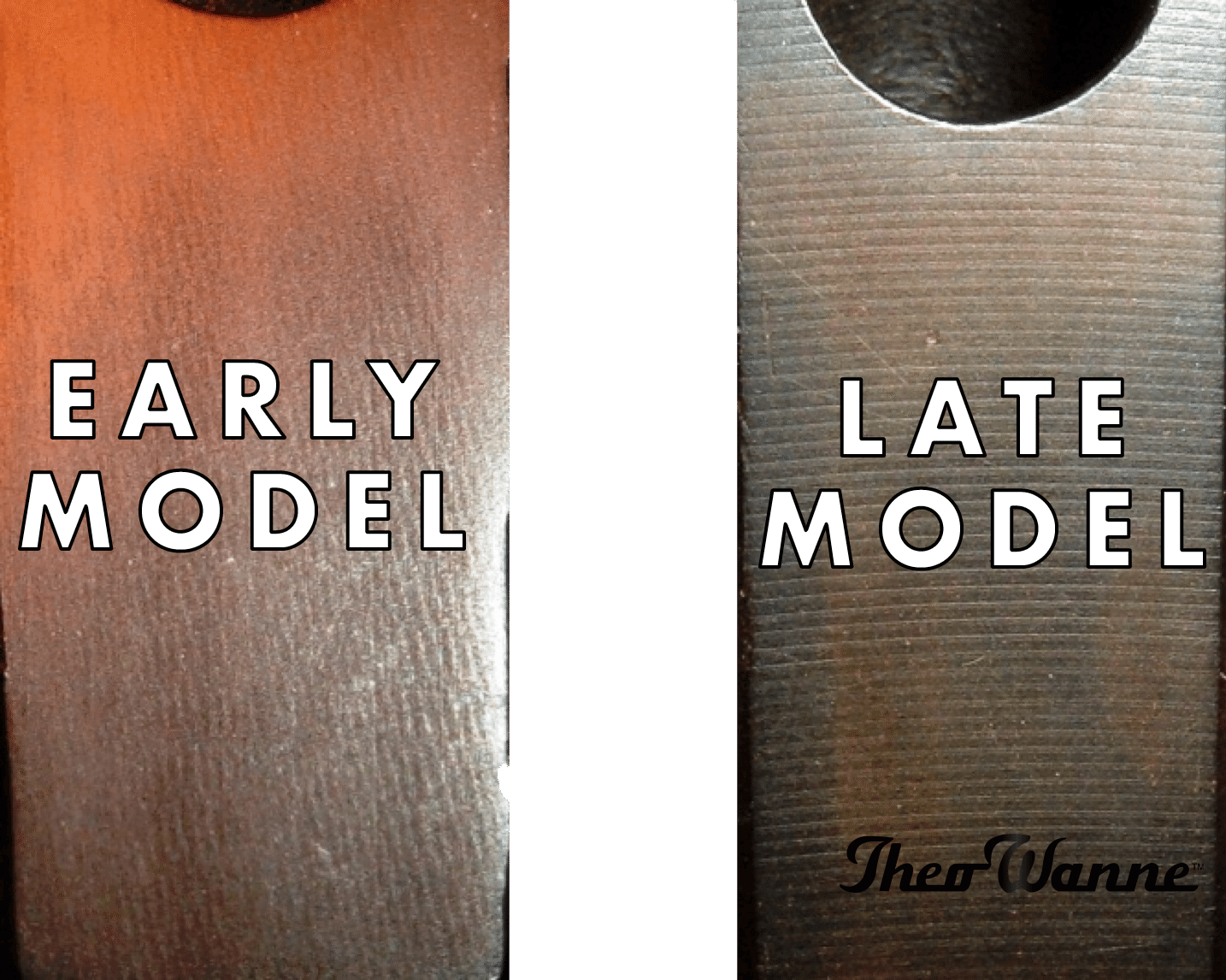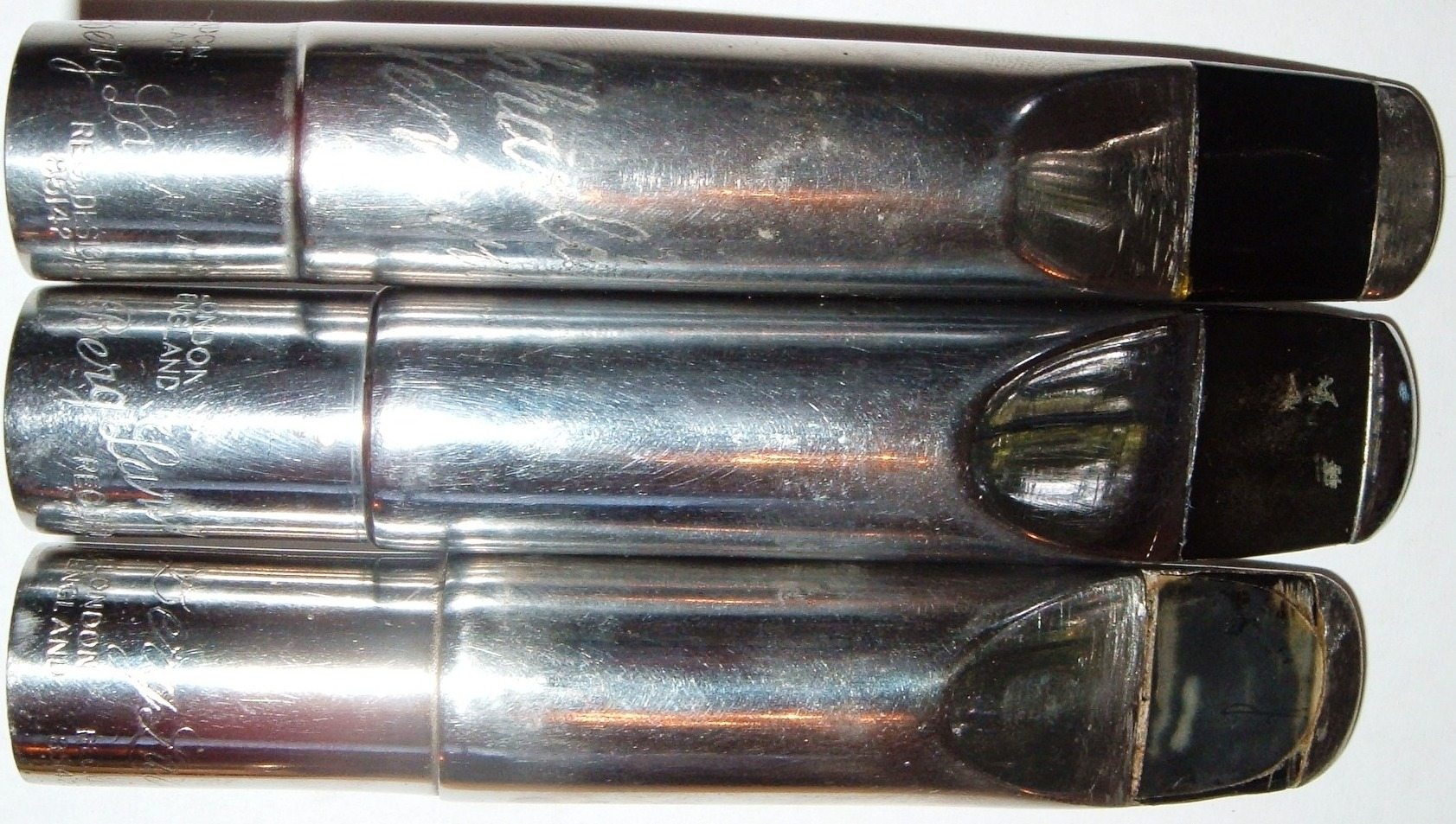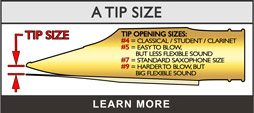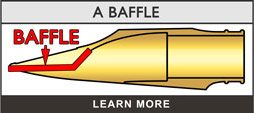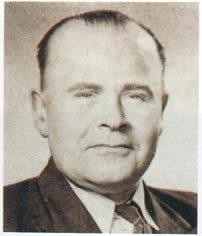 Berg Larsen was originally known as a professional musician and reed maker in Archer Street London. In 1945, he designed and manufactured a range of ebonite mouthpieces for clarinet and saxophone which later evolved into a range made out of stainless steel for an increased lifespan. Berg Larsen Mouthpieces have a unique design: a small chamber with flat side walls. This makes them unique among the vintage brands. Berg Larsen passed away in 1972.
Berg Larsen was originally known as a professional musician and reed maker in Archer Street London. In 1945, he designed and manufactured a range of ebonite mouthpieces for clarinet and saxophone which later evolved into a range made out of stainless steel for an increased lifespan. Berg Larsen Mouthpieces have a unique design: a small chamber with flat side walls. This makes them unique among the vintage brands. Berg Larsen passed away in 1972.
Example: 95/1M
95 = The first number is the tip opening in thousandths of an inch. 95 means .095″. note: Bergs run about .005″ small, so a 95 would actually measure .090″.
1 = The second number indicates baffle height/brightness. A 3 is the darkest and a 0 is the brightest.
M = The last letter indicates facing length. M is a medium length facing, while SMS is a short facing. An SMS facing is about the same length as an Otto Link mouthpiece facing. The M is longer than an Otto Link facing.
VERY VINTAGE DUCK BILL:
Made in the 1940s, these were the first mouthpieces made by Berg Larsen. These are very distinctive both for the long, gradual sloping bite area (though the rubber versions are more abrupt) and their very long table that extends quite a bit beyond the reed. They all have a bullet cut chamber and are the rarest of all the Bergs. The rubber versions tend to be quite thick (wide) in the body. Mr. Larsen called the metal version, the ‘Special’ version being that it was made out of “Special Sheffield Stainless Steel”. The Very Vintage Duck Bill Berg Larsen’s were made in soprano, alto, tenor and baritone. Here is the tenor version:
Here is the Alto ‘Very Vintage Duckbill’ version:
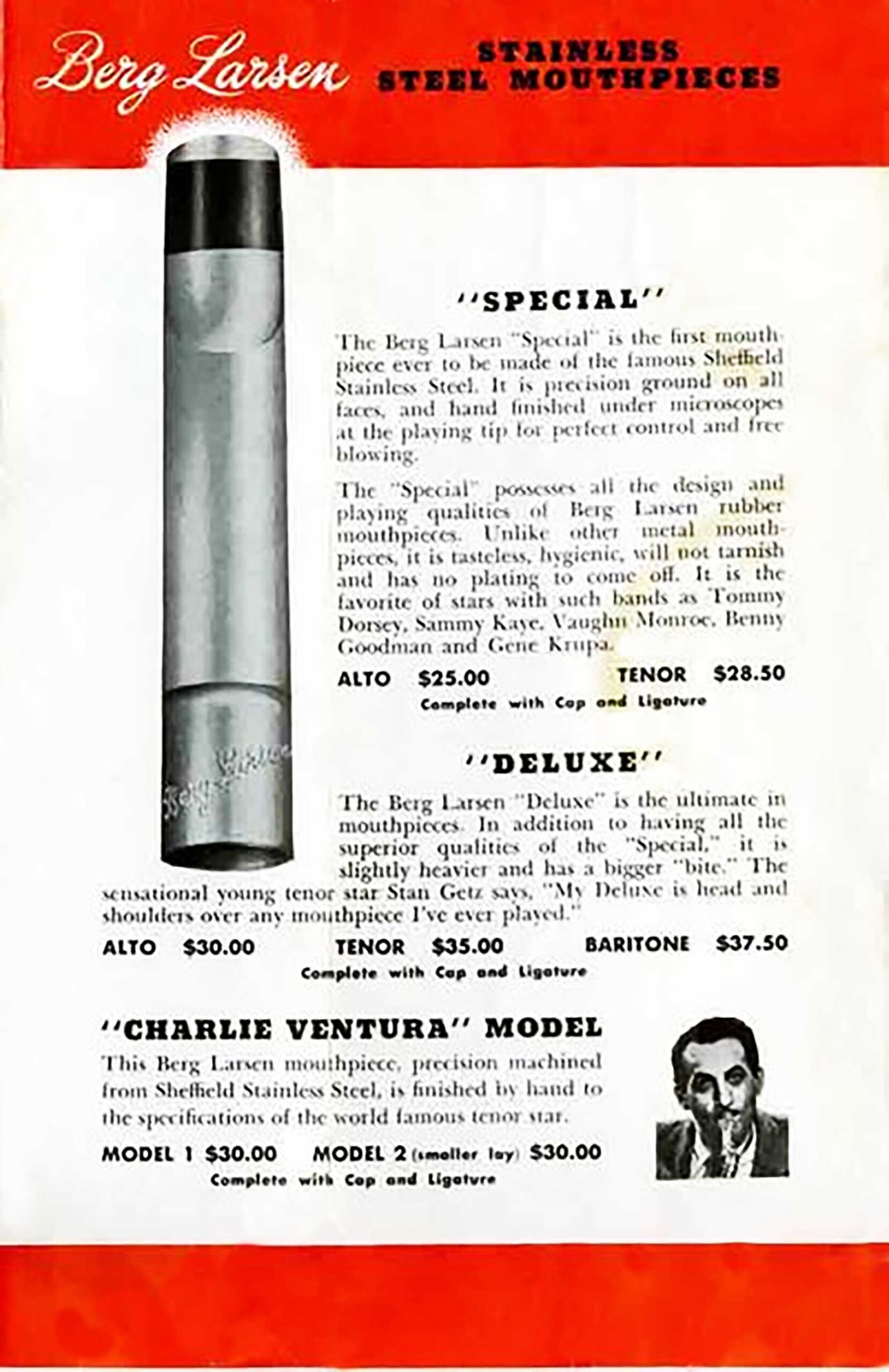 A very rare version of this mouthpiece, the Charlie Ventura model, is what Charlie Ventura actually played from 1949 on, on a King Super 20 Siversonic tenor sax.
A very rare version of this mouthpiece, the Charlie Ventura model, is what Charlie Ventura actually played from 1949 on, on a King Super 20 Siversonic tenor sax.
All Charlie Ventura Models were 100/2M model and had ‘CV Special’ written on the side. Before 1949, Charlie Ventura played on a Bobby Dukoff Vibrametal mouthpiece on a Balanced Action Selmer tenor saxophone.
Another rare version of the Very Vintage Berg is the Deluxe model which was only available via special order. I have only seen this model in tenor. What makes this mouthpiece particularly unique is that the body is wider/thicker than the ‘Special’ Model and was made in both gold plated brass or.stainless steel.
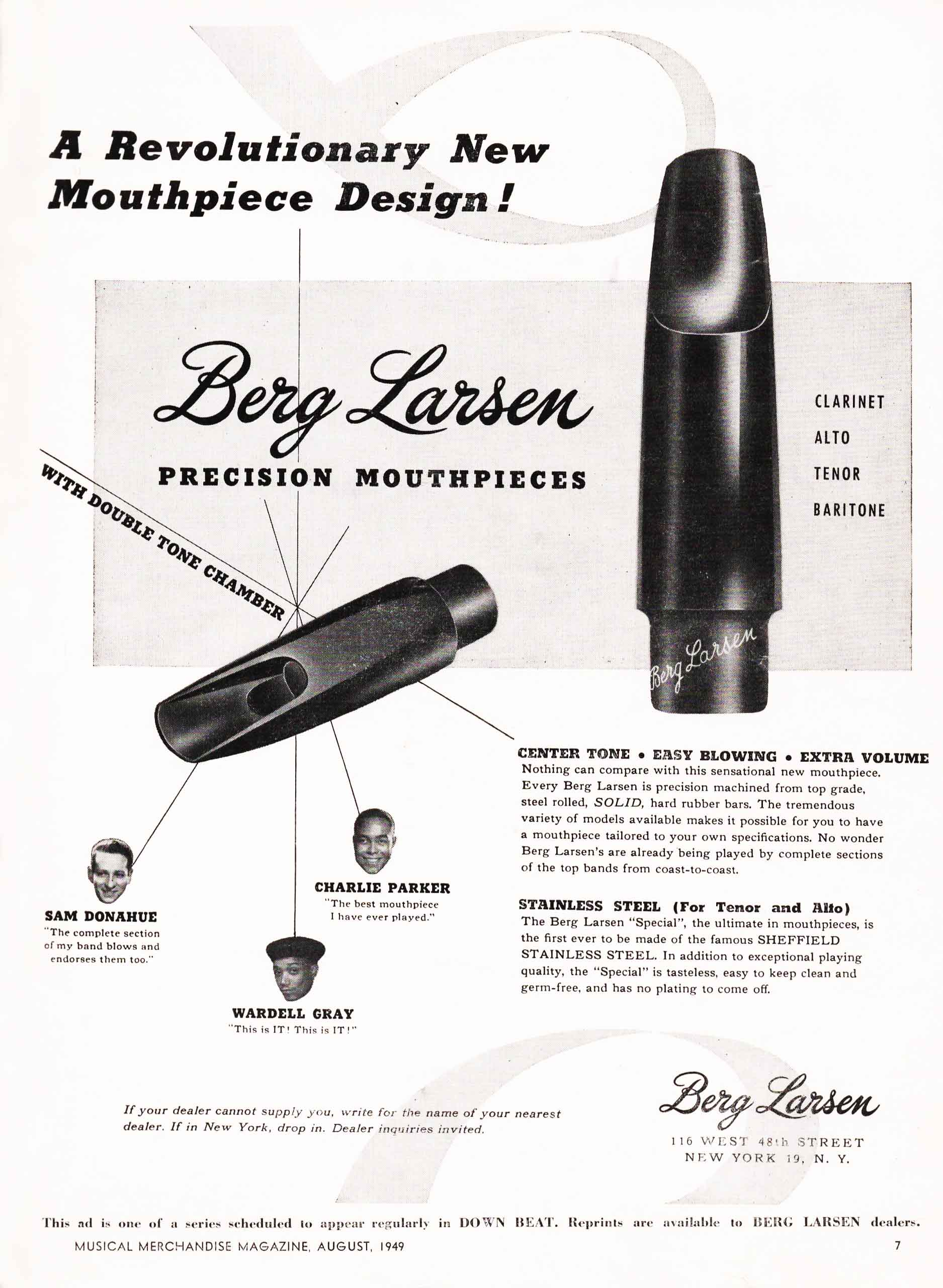 All the Very Vintage Berg Larsen mouthpieces were referred to as ”Berg Larsen Precision Mouthpieces’ as can be seen in this advertisement.
All the Very Vintage Berg Larsen mouthpieces were referred to as ”Berg Larsen Precision Mouthpieces’ as can be seen in this advertisement.
However, it was only at the end of the run of the long table ‘slant signature’ mouthpieces that Berg Larsen wrote out ‘Berg Larsen Precision’ on the shank.
After this, a ‘P’ was simply stamped on the back/top of the shank. These had a shorter table, and longer shank, but still had the slanted signature Berg larsen. Later ones had a straight signature on the shank like the ‘Duck Bill’ models. Just a few of this version were made without the ‘P’. These models had longer shanks than the previous Very Vintage models but shorter shanks than the later ‘Duck Bill’ model.
All of these mouthpieces came with brass caps and ligatures. The ligature screws all had a very distinctive square head on them.
DUCK BILL
Duck Bill Bergs have a very mild upward slope right behind the bite-plate. These are also often called ‘Bullet Chamber’ mouthpieces because of the V shaped drop off at the back of the baffle that looks like the tip of a bullet. The first of these (made in the early 1950’s) still had the ‘P’ marking on the back like the later ‘Very Vintage’ models. They had a fatter and heavier body than the later ones. The ‘P’ model was the best made and sounding of this model.
Just a few baritone mouthpieces with tenor facing were made. The first was made especially for Plas Johnson in about 1960. It can be identified because of the ‘T’ next to the tip size.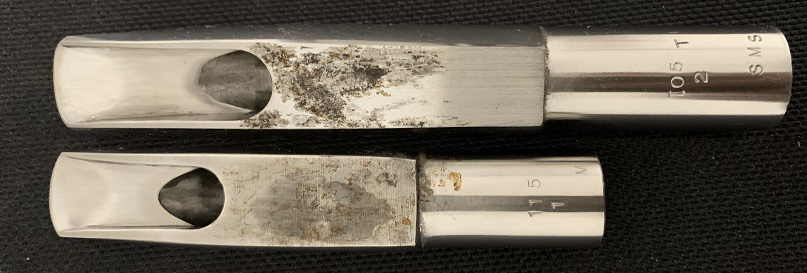 A very rare gold plated solid brass early version of the Duck Bill was made for a short while. This is not to be confused with the later bronze straight bill Berg Larsen put out in the 1980s and 1990s. The gold plate on this mouthpiece was direct plated to the brass, without the usual intermediary plating material like nickel or silver used by Otto Link, etc.
A very rare gold plated solid brass early version of the Duck Bill was made for a short while. This is not to be confused with the later bronze straight bill Berg Larsen put out in the 1980s and 1990s. The gold plate on this mouthpiece was direct plated to the brass, without the usual intermediary plating material like nickel or silver used by Otto Link, etc.
The Duck Bill period of mouthpieces came with several different ligature and cap combinations, including a screw down ligature.
During the period of the ‘Duck Bill’ vintage Berg Larsen mouthpieces the factory moved, and all the tooling used to make them changed as well. The clearest way to delineate between these two major phases in Berg Larsen history is to look at the machine marks left on the table by the machines used to make the facings. The older mouthpieces had a denim look to the table which was created by a stone grinding wheel. The later mouthpieces had arced machine marks going from side to side created by a milling machine.
The vintage Berg Larsen mouthpieces came in three shank lengths. The bottom picture is the oldest, the ‘Very Vintage’ model. The middle mouthpiece is the transitional ‘P’ model. The top mouthpiece is a vintage Berg Larsen ‘Duck Bill’. All three are the vintage models with the denim look machine marks on the table.
SCOOP BILL BEAK
Bergs with a very pronounced upward scoop right behind the bite-plate are called ‘Scoop Bill’ Bergs. These all have a straight drop off at the back of the baffle. These did not change in design very much from the early 1950s through the 1980s. The only real change was the machinery used to make the facings during the above mentioned manufacturing plant change.
STRAIGHT BILL/BEAK
Straight Bill Bergs have a long straight bite-plate section but still have the V shaped drop off at the back of the baffle. These have a narrower body than the Duck Bill. They were produced from the 70s through the 80s. All of these have the arced machine marks on the table.


